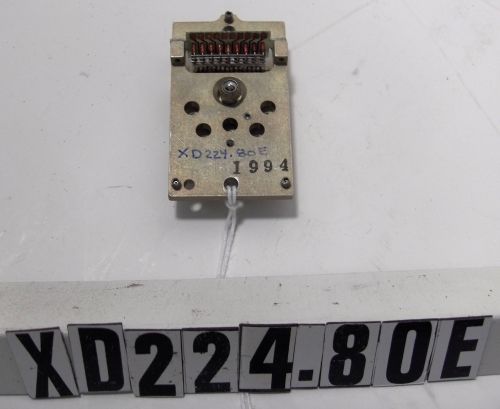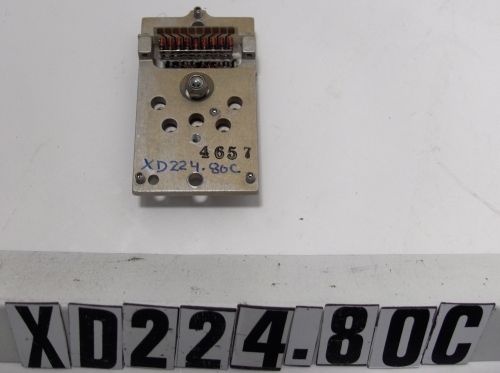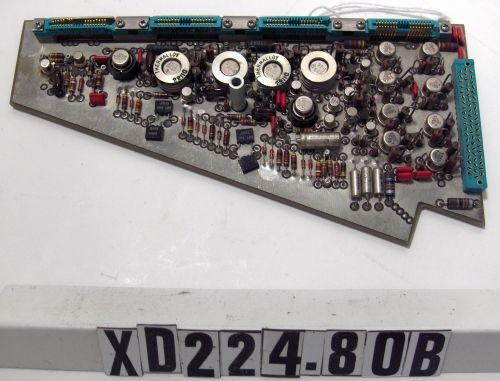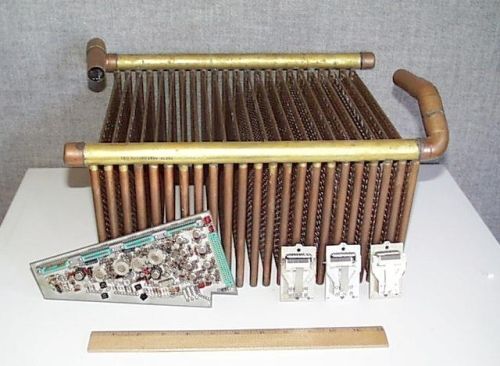
Title
Advanced Scientific Computer (ASC)Catalog Number
XD224.80Type
Physical objectDescription
Object is a large cabinet divided into three bays. The left bay labeled DC5-PS1 contains a power supply. The central bay labeled DC1-SC1 contains a rack of large connectors connected to six data cables that have been cut off. The right bay labeled DC2-ECL1 contains many plug-in modules on a back plane. The modules are densely populated on both sides with integrated circuits.The Advanced Scientific Computer, or ASC, was a supercomputer architecture designed by Texas Instruments (TI) between 1966 and 1973. Key to the ASC's design was a single, high-speed shared memory. The memory system had 8 banks and 8 ports, each connected to an ASC subsystem. Access was through an eight way full crossbar switch. The switch allowed all 8 ports to simultaneous access memory. Each access produces an "octet" or eight 32 bit words.
The ASC consisted of two primary subsystems: the Peripheral Processor (PP) and the Central Processor (CP). The PP executed the operating system. The CP executed the user application programs.
The PP had 8 virtual processors. It had one set of execution hardware and 8 sets of registers. The registers were connected to the execution hardware in a rotating fashion similar to Seymour Cray's ground breaking CDC 6600.
The CP was a vector, pipelined processor. There were 48 thirty-two bit registers: 16 arithmetic, 16 base address and 16 vector registers. The CP had three kinds of subsystems: an Instruction Processor unit (IP), Memory Buffer (MB) units and Vector units. A MB and a Vector unit were paired to create a vector pipeline. The IP fetched an octet, broke it into single instructions and dispatched them. The MB performed the memory accesses for each instruction. Each vector pipeline unit had an Arithmetic unit and a vector processor. A scalar instruction simply went through the Arithmetic unit as in a traditional computer. A vector instruction went through the Arithmetic unit multiple times with addresses and operands modified by the vector processor.
The ASC could be configured with 1, 2 or 4 vector pipelines. Most were 2 pipe machines. The first prototype had one pipe. Only one 4 pipe system was built. Each vector pipeline had its own memory buffer unit. Each memory buffer unit had its own port to the shared memory. Since the Arithmetic unit was pipelined, it could produce a result every clock cycle. This arrangement could perform a massive amount of calculation. For example, the ASC Fortran compiler could break a "Do-Loop" into 4 vector instructions. In a 4 pipe machine, each vector instruction was sent to its own pipe and they would execute in parallel. The net result was 4 calculations from the "Do-Loop" every clock cycle.
The TI Advanced Scientific Computer was a supercomputer that combined a Peripheral Processor and a Central Processor along with software that could automatically produce vectorized code from unmodified source code.
Date
1974 ca.Manufacturer
Texas Instruments Incorporated (TI)Place Manufactured
U.S.Identifying Numbers
| Model number | ASC | |
| Other number | D224.80 | Found in the top right corner. |
| Other number | DC1-SC1 | Found on a label in the top right. |
| Other number | DC2-ECL1 | Found on the back of the power supply. |
| Other number | DC5-PS1 | Found on a label in the top left. |
| Serial number | 4A-6670 | Found on the power supply. |
| Serial number | 4A-6671 | Found on the power supply. |
| Serial number | 96214 |





